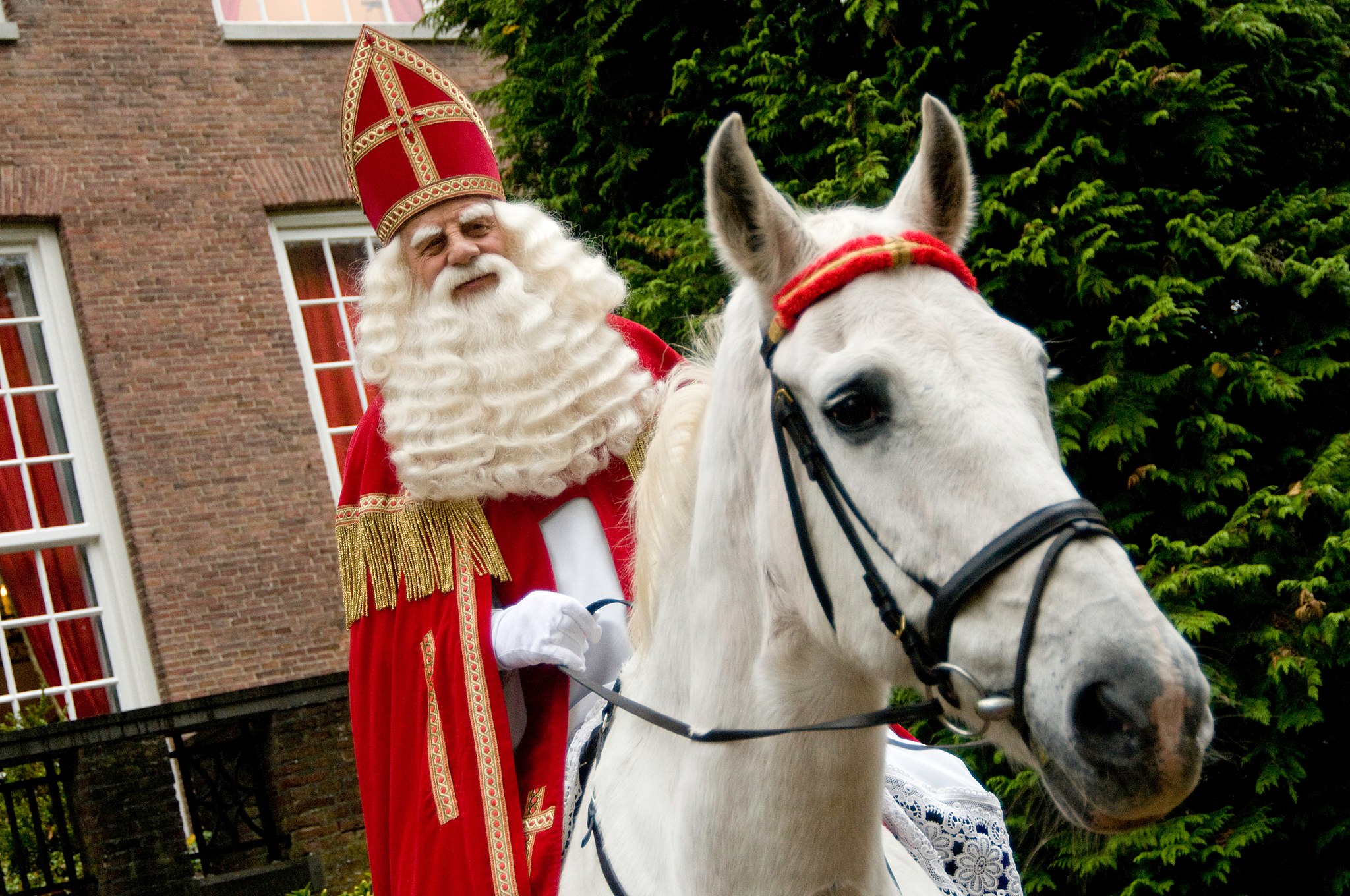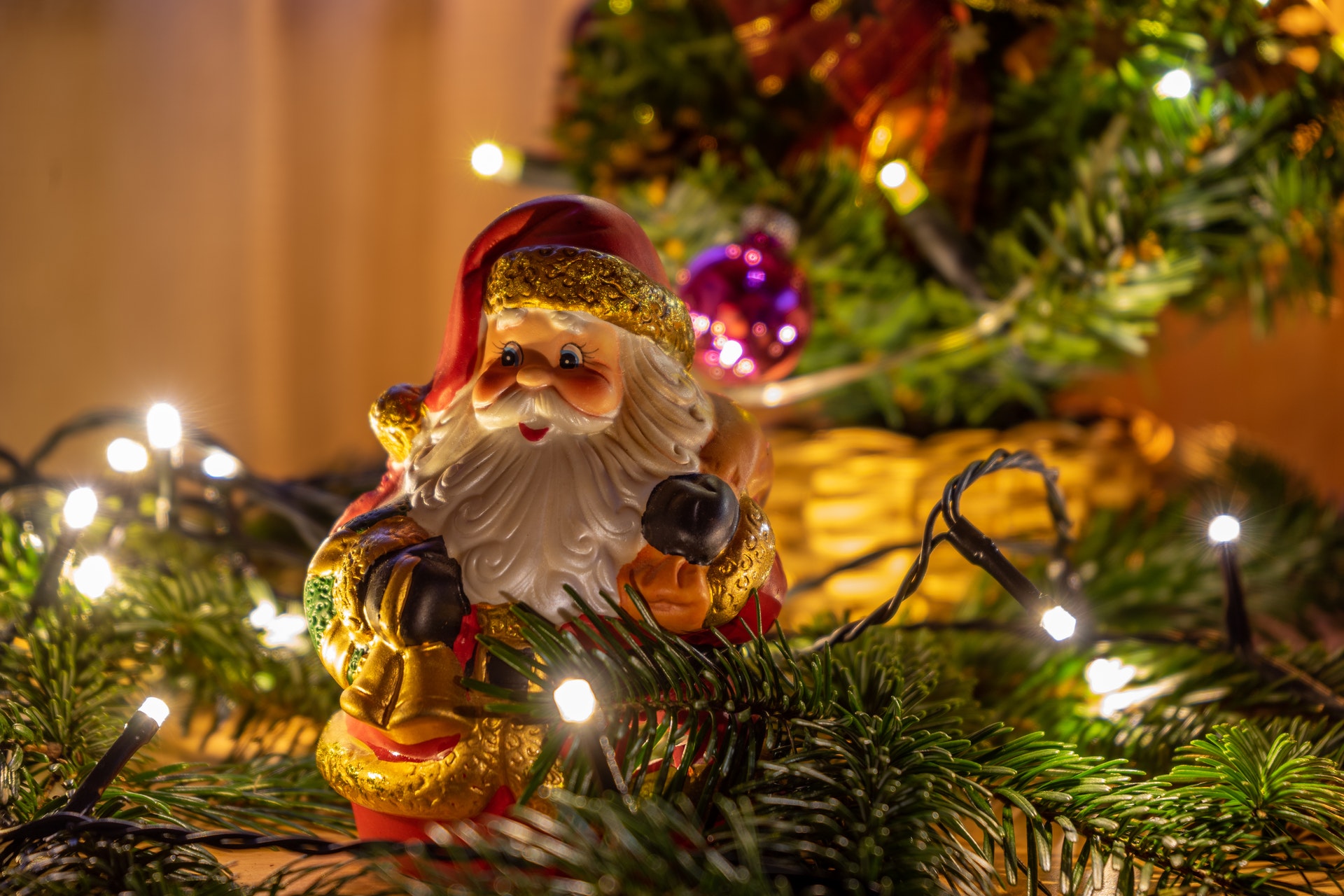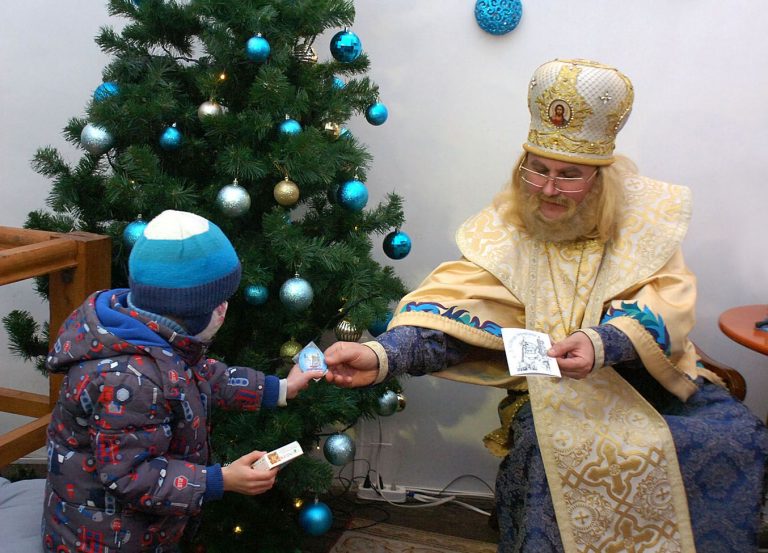The legend of St Nicholas revolves around a Christian monk who lived during the third to fourth century and inspired the fabled figure Santa Claus. Santa is depicted as a rotund and merry man who wears a red suit and cap trimmed with white fur, and black leather belt and boots. As he carries a bag full of presents on Christmas Eve, millions of kids around the world look forward to this event each year.
Known as “Nikolaos of Myra,” Nicholas was the Greek bishop of Myra. He was an only child of Christian parents born in the ancient Lycian seaport city of Patara on March 15, 270 AD. After his parents perished in an epidemic in his childhood, he was fostered by his uncle, the Bishop of Patara, who taught him to read, and ultimately ordained him as a priest.
Nicholas became the subject of several stories due to his piety and charity. He allegedly gave up all of his inheritance and toured across the countryside, assisting the needy and ill. He was credited with providing money for a dowry to the father of three sisters, saving them from being sold as slaves.
According to legend, Saint Nicholas was said to have traveled by sea to the Holy Land to see where Jesus lived and died. The waters were dangerously rough due to a heavy storm, and the sailors were afraid. After Nicholas prayed for calm seas, the waves became tranqui.
Because of this narrative, he was made a saint in the 9th century.
Success
You are now signed up for our newsletter
Success
Check your email to complete sign up
Nicholas was ordained a bishop by the clergy and people of the province in Myra. Nicholas complained that he was unworthy of the position of bishop. He said that he was too young and inexperienced for such a tremendous amount of authority. All of the bishops agreed that Nicholas’ appointment as the new bishop was God’s will. They took him into the church and put him in the bishop’s seat.

Saint Nicholas also reportedly saved three men who were falsely imprisoned and sentenced. As the legends of Nicholas spread around the world, he became revered as the patron saint of numerous Christian communities throughout Europe. Saint Nicholas is usually depicted as being thin with a long white beard, brimming with joy and compassion.
St. Nicholas is revered as the patron saint of children as well as merchant mariners. He is also the patron saint of Russia and Greece. He was known for his kindness and generosity. Some nations observe St. Nicholas Day on December 5. In the Catholic Church, his feast day is observed on the sixth anniversary of his passing in 343 AD in the city of Myra.
By the Middle Ages, Nicholas’ fame had extended far and wide due in part to the distribution of relics from his remains to churches in Italy. His renown moved northward, mixing with Teutonic folktales of elves and sky-chariots. By the Renaissance, Nicholas was Europe’s most popular saint.
Because of the upheaval in the country, Saint Nicholas’s relics were taken to a pilgrimage site in Bari, Italy, in the year 1067, where they may still be found today. His bones are said to exude an oil (it is referred to as the “manna of St. Nicholas,”) and it’s believed to have healing properties. There are many pilgrims that go to Bari to pay their respects at his burial place.
During the Protestant Reformation in the 1500s, saint worship was rejected. Saint Nicholas was an exception, however; particularly in the Netherlands, where he took on the Dutch persona Sinterklaas, a tall, white-bearded man in crimson robes who brought toys or coal-lumps to good and bad children every December 6.

Sinterklaas becomes Santa in the US
St. Nicholas made his first foray into popular culture in eighteenth-century America. Sinterklaas legends were reportedly transmitted by Dutch immigrants who settled near the Hudson River that travels through eastern New York. In 1804. During the New-York Historical Society’s annual meeting, John Pintard presented woodcuts of St. Nicholas. The engraving’s backdrop has now-familiar Santa imagery, such as stockings stuffed with presents and fruit placed above a fireplace.
Washington Irving contributed to the popularization of the Sinterklaas legends in his satirical 1809 book, The History of New York, which referred to Saint Nicholas as everything from a “rascal” with a blue three-cornered hat, red waistcoat, and yellow stockings, to a man wearing a broad-brimmed hat and a “huge pair of Flemish trunk hose,” and unofficially designated him as New York’s patron saint. He also described him as a portly Dutchman who soared the sky in a wagon, dropping presents down chimneys.
Another New Yorker, Clement Clarke Moore substituted a wagon for a sleigh carried by “eight small reindeer” in his famous poem ‘Twas the Night Before Christmas, originally written for his daughters as An Account of a Visit from St. Nicholas. During the American Civil War, cartoonist Thomas Nast created the first in a series of famous portrayals of a chubby and jovial Saint Nicholas in 1879. Nast is the one who gave Santa his North Pole workshop, elves, and his wife, Mrs. Claus.
Santa figures around the world
Santa Claus was not the only gift-giver to show up at Christmas during the 1800s. Kris Kringle, or “Kristkindl” in German, means “Christ Child.” This term entered the English language around 1830 as a result of the immigration of Pennsylvania Dutch settlers. “Kris Kringle” is an angelic figure thought to bring gifts to well-behaved Swiss and German children.
Jolly elf Jultomten is believed to deliver presents on a goat-drawn sleigh in Scandinavia, where Christmas is celebrated widely.
English legend says Father Christmas visits each household on Christmas Eve to fill children’s stockings with holiday presents; while children in France have their shoes filled with small gifts by Père Noël. (Father Christmas). Italians believe in a benevolent witch named La Befana who travels on the eve of the epiphany, down chimneys on a broomstick, and delivers coal to naughty children and gifts to good children.
Toys are delivered to children in the US by Santa Claus flying from rooftop to rooftop on Christmas Eve. His magic sleigh is pulled by his reindeer: Dasher, Dancer, Prancer, Vixen, Comet, Cupid, Donner, Blitzen, and Rudolph. Traditionally, empty stockings are “hung by the chimney with care, in hopes that St. Nicholas soon would be there.”
Santa and Mrs.Claus live in the North Pole, and youngsters send letters to Santa and trace his travels throughout the globe on Christmas Eve. Children frequently leave cookies and milk for Santa, and carrots for the reindeer. Santa Claus keeps a list of who’s “naughty and nice, and parents remind their children of this list to ensure good behavior.
















